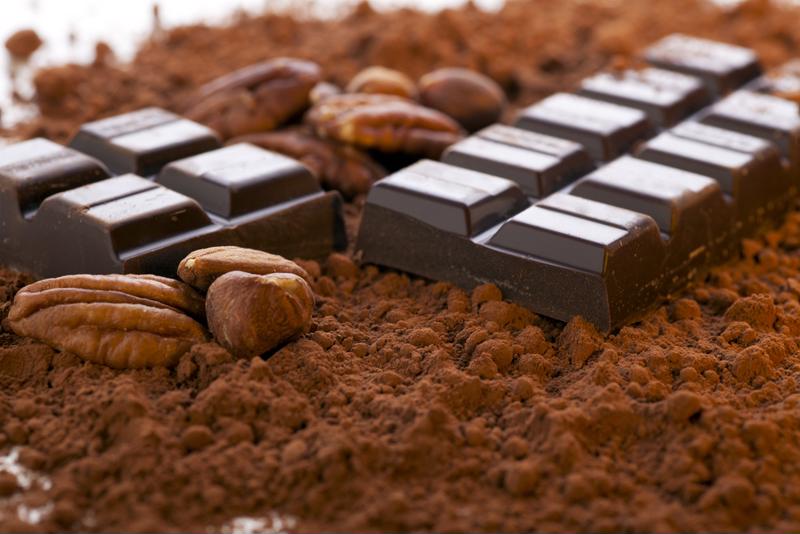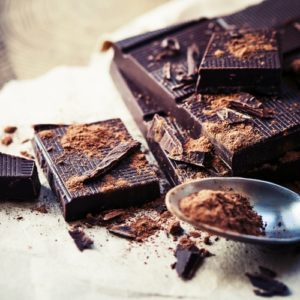While you may have grown up savoring every bite of mass-produced candy bars, those ubiquitous brands just don’t cut it with many chocolate lovers these days. Sweets enthusiasts expect complex, unique flavors, as well as reassurance that their dessert was manufactured by ethical and environmentally sustainable means. The changing world of chocolate has created new demands on culinary professionals. Anyone who is interested in the baking and pastry arts needs an understanding of how these tasty treats are produced and what makes some confections exceptional.
How chocolate goes from bean to bar
Chocolate begins with the cacao bean, the seed of the cacao tree that is fermented and dried to make cocoa. According to the Kitchn, the majority of cacao used by American artisanal manufacturers originates in Central or South America. There are regional differences in flavor that remain apparent in a completed chocolate bar, so many chocolatiers emphasize that their products are single-origin.
“There are regional differences in chocolate flavors.”
French chocolate-maker Valrhona outlined the process that occurs once the beans make it to their destination. Following cleaning and a quality control inspection, the beans are roasted to develop their flavor and detach the beans’ shells. Then, they are crushed to separate out the cocoa nibs, which are ground to a paste and formed into flakes. Next is conching, in which the mixture is heated and the cocoa butter redistributed. Tempering, a cycle of melting and cooling, results in a smooth, stable chocolate that is ready to be molded into bars or other shapes.
What makes the best chocolate?
To properly appreciate finely crafted chocolate, you must know what flavor characteristics set it apart. Former pastry chef and chocolatier, turned professional chocolate taster and author Georg Bernardini discussed what makes the best bar with Bon Appetit. He outright dismissed any items that contain artificial flavoring and declared the world’s biggest brands largely inedible.
When it comes to all-natural chocolate, however, Bernardini focuses on how harmoniously the ingredients mesh together. He also takes into account how the price and wrapper reflect the contents. According to Bernardini, the current U.S. chocolate scene is the most exciting in the world because of its spirit of independent experimentation with various taste combinations.
Not all artisan chocolatiers have the same resources or commitment to controlling every aspect of how the bar is made, though. Dallas-based blog editor and chocolate expert Scott Craig explained to Eater that there are two major schools of premium chocolate production. Some makers use the specialized equipment that was formerly employed by major manufacturers before the process reached its current levels of mechanization and mass production. Others try to craft great bars with only cheap, improvised gear.
The resulting bars have idiosyncratic charm and are often sold in beautiful, eye-catching wrappers. Still, Craig insists that the taste and texture are rarely up to par and that some small-batch, artisanal chocolatiers may in fact be hurting the market. He accused Brooklyn’s The Mast Brothers in particular of deceiving customers by claiming to make bars from scratch when they in fact bought the chocolate for their early products from Valrhona and remelted it.
“An immature market rewards pretty packaging, product ubiquity, novelty, and low price, all of which puts quality-oriented makers at a competitive disadvantage,” Craig said.
 Not all chocolate bars are created equal.
Not all chocolate bars are created equal.The finest bars
On the other hand, a number of U.S. chocolate manufacturers have produced exceptional results in recent years. These companies are geographically disparate and draw an array of different flavors, but they share a focus on the details that go into gathering ingredients and ensuring their manufacturing process has consistently excellent results.
Serious Eats named Liddabit Sweets of Brooklyn among the best in the country. Run by two women who met at the French Culinary Institute, the candy company’s shop offers a variety of locally produced treats, like a signature item called the Snacker. This four-ounce bar includes roasted peanuts, caramel and chocolate nougat, with a dark chocolate exterior.
Rogue Chocolatier, based in Three Rivers, Mass., has a policy of paying at least twice Fair Trade minimums for its single-origin ingredients. The company’s workers then perform every part of the production process, from cleaning the beans to packing the bars, in house and by hand. Customers are encouraged to preorder the resulting confections, like the Hispaniola, which is sourced from the Dominican Republic and features citrus, red fruit, cocoa and gingerbread flavors.
Similarly, Patric Chocolates‘ small batches of bars crafted from scratch are available for only a short time each month. Enthusiasts must therefore move quickly to obtain celebrated items like the PBJ OMG from the Columbia, Mo. company. This bar brings together a fruity chocolate from Madagascar, dark roasted peanut butter and sea salt.
Premium chocolate has become a vital part of the U.S. culinary scene. As a chef, you will benefit from knowing what separates flashy but inferior products from truly delicious confections worthy of their price tags.



